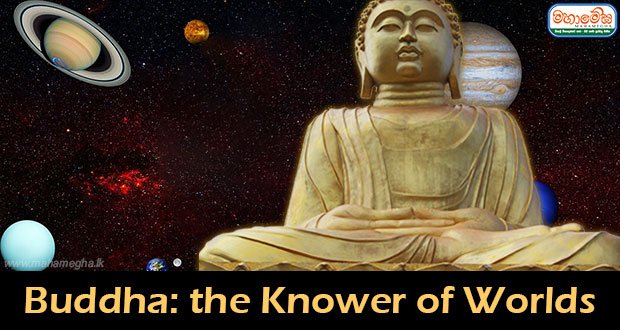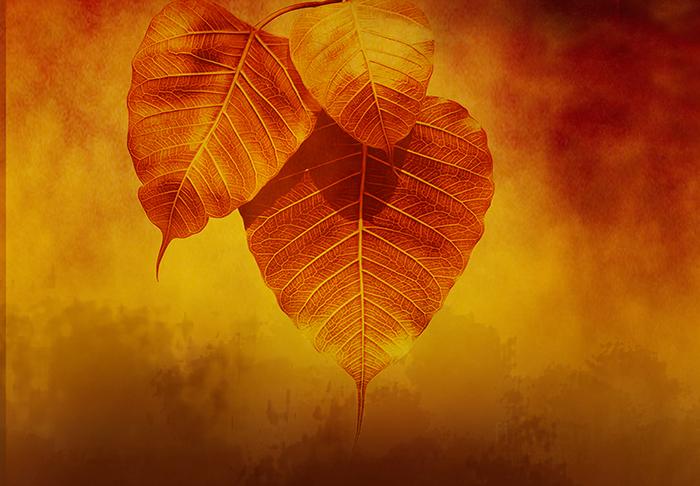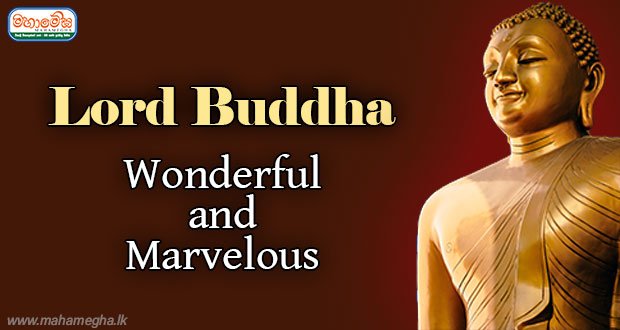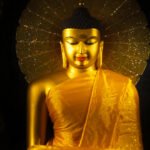Itipiso Bhagavā lokavidū
Such indeed is the Blessed One, the knower of worlds.
Among the nine qualities of the Buddha, the fifth describes the Buddha as lokavidū. The Buddha is respectfully known as lokavidū because he realized the nature of all the worlds and also the way to be free from all the worlds.
Typically, for the average person, “world” simply means the Universe with the Earth, Moon, Sun, planets, stars, etc. However, the Buddha’s realization of the world was far beyond that conception. His understanding of the world surpasses that which can be seen by the naked eye and therefore gives us a broader perspective on the world, accessible to us only from the amazing wisdom of the Buddha.
We come across many instances in the Sutta Piṭaka where the Buddha defined the word “world” (loka). Once, a deity by the name Rohitassa approached the Buddha and posed to him the following question:
“Venerable sir, if in this world there is such a place where one is not born, does not age, does not die, does not pass away, and is not reborn—venerable sir, that place which is the end of the world, can one arrive at that place by traveling on foot?”
To which the Buddha replied:
“As to that end of the world, friend, where one is not born, does not age, does not die, does not pass away, and is not reborn—I say that it cannot be known, seen, or reached by traveling on foot.”
Then the deity Rohitassa reminiscing on a past life of his, stated:
“Once in the past, venerable sir, I was a seer named Rohitassa, son of Bhoja, possessed of spiritual power, able to travel through the sky. My speed was such, venerable sir, that I could move just as swiftly as a firm-bowed archer—trained, skillful, practiced, experienced—could easily shoot past the shadow of a palmyra tree with a light arrow. My stride was such, venerable sir, that it seemed to reach from the eastern ocean to the western ocean. Then, venerable sir, there arose a desire in me: ‘I will reach the end of the world by traveling on foot.’ Possessing such speed and such a stride, and having a lifespan of a hundred years, living for a hundred years, I traveled for a hundred years, without pausing except to eat, drink, take meals and snacks, to defecate and urinate, to sleep and dispel fatigue; yet I died along the way without having reached the end of the world.”
The Buddha then gave the deity Rohitassa a profound explanation on how one should gauge the magnitude of the world:
“It is, friend, in just this fathom-high body endowed with perception and mind that I make known the world, the origin of the world, the cessation of the world, and the way leading to the cessation of the world.”
Rohitassa Sutta – Devaputta Saṃyutta
Once a monk by the name of Samiddhi approached the Buddha and asked:
“Loko loko’ti Bhante vuccati. Kittāvatā nu kho Bhante loko vā assa lokapaññatti vāti.” “Venerable sir, it is said, ‘the world, the world.’ In what way, venerable sir, might there be the world or the description of the world?”
Then the Buddha replied:
“Where there is the eye, Samiddhi, where there are forms, eye-consciousness, things to be cognized by eye-consciousness, there the world exists or the description of the world. Where there is the ear … the mind, where there are mental phenomena, mind-consciousness, things to be cognized by mind-consciousness, there the world exists or the description of the world.”
Samiddhilokapañhā Sutta – Saḷāyatana Saṃyutta
Once the Venerable Ānanda Thero, the chief attendant of the Buddha, asked the Blessed One: “What is the meaning of the term ‘world?’”
The Buddha replied by saying: “Ānanda, whatever is subject to disintegration, is called the world in the Noble One’s Discipline.”
Palokadhamma Sutta – Saḷāyatana Saṃyutta
According to the above suttas, it is clear that it is our very own body that the Buddha defined as the world. The Buddha was the first person to reveal to the world that by realizing the arising, continued existence, and cessation of the body, one can put an end to rebirth and renewed existence—which is another reason why the Buddha is known as lokavidū.
Until the Buddha realized and taught this to the world, no one knew how our existence comes to be. Many believed it to be a creation of an almighty creator God, or just a byproduct of sexual union, or just something that happened by chance, without a specific reason. It was the Buddha who clearly pointed out, due to the root cause of craving (taṇhā), that rebirth and samsaric existence come to be. Further, the Buddha stated that with the eradication of that same craving, rebirth and samsaric existence too can be eradicated. It is to achieve this goal that the Buddha revealed to us the methodical process of spiritual development known as the Noble Eightfold Path.
Moreover, the Buddha taught us to see ourselves as conditioned of five aggregates of clinging: namely the form aggregate of clinging, the feeling aggregate of clinging, the perception aggregate of clinging, the volitional formations aggregate of clinging, and the consciousness aggregate of clinging, or as conditioned by six elements: the earth element, the water element, the heat element, the air element, the space element, and the consciousness element, or else as conditioned by the six senses: the eye, the ear, the nose, the tongue, the body, and the mind. By seeing and contemplating in this manner, we can abandon the self-view, eradicate craving, and thus never take up another body again. Therefore, any wise person who wishes to glean a deep understanding of the world should investigate with wisdom his or her own body. In this way, realizing the true nature of one’s existence would also necessitate realizing the true nature of the world at large.
The Blessed One also possessed a unique knowledge of all the realms of existence in the world: such as the Hell worlds, the Animal world, the Titans world, the Ghost world, the Deva worlds, and Brahma worlds. Not only did he know of all these realms, but he was also aware of all the wholesome and unwholesome kamma which bring about rebirth into these realms.
Thus, having realized all the fortunate and unfortunate realms of existence in the world, the Buddha freed himself from all realms and taught us the way to free ourselves as well. Therefore, our Supreme Teacher, the Gautama Sammā Sambuddha to whom we went for refuge, is respectfully known as lokavidū—the knower of worlds.
Written by a Venerable Monk of
Mahamevnawa Buddhist Monastery














Recent Comments